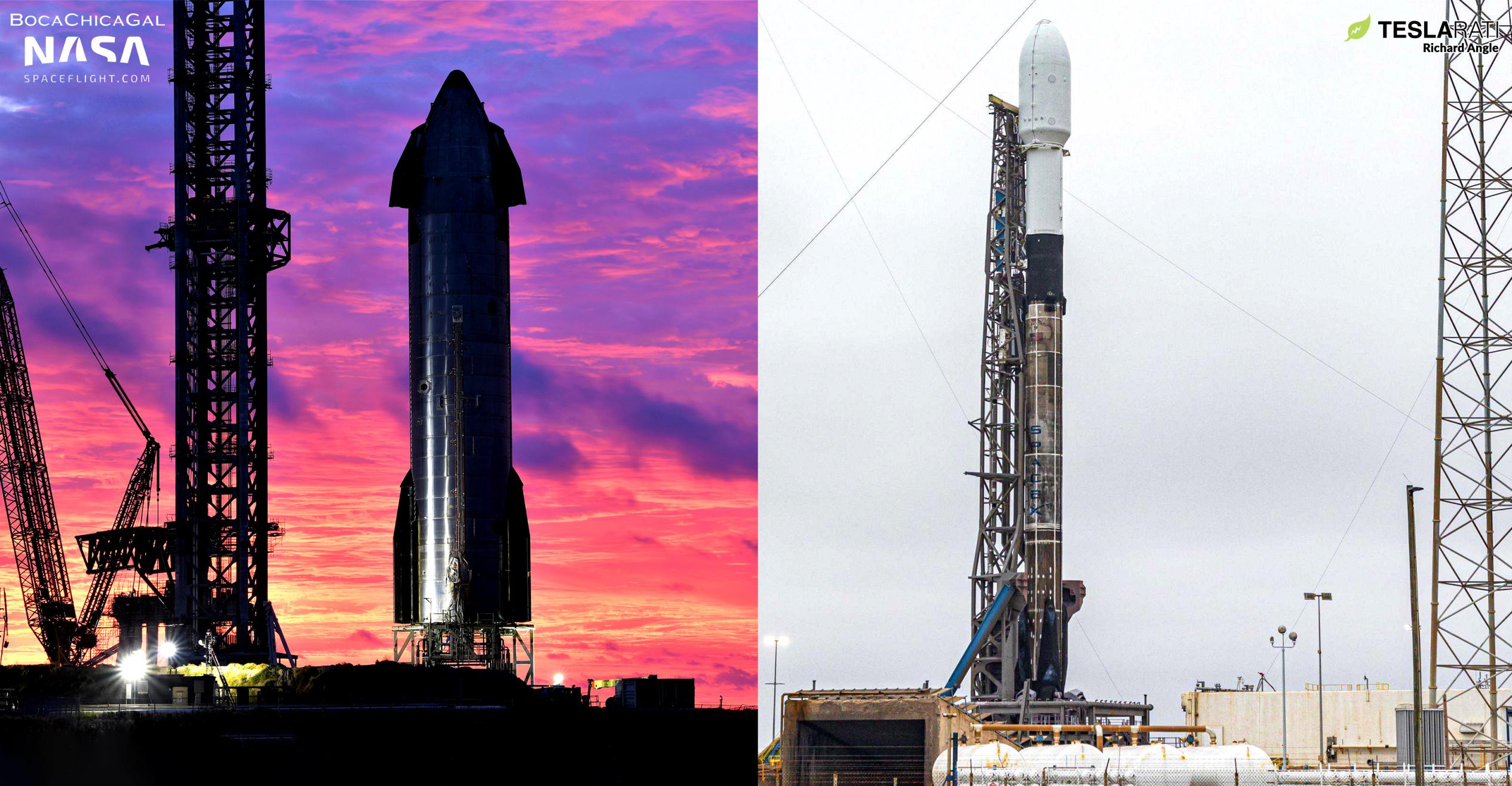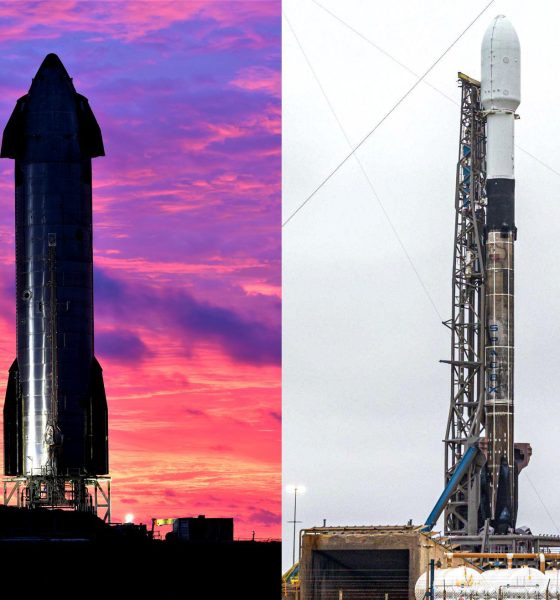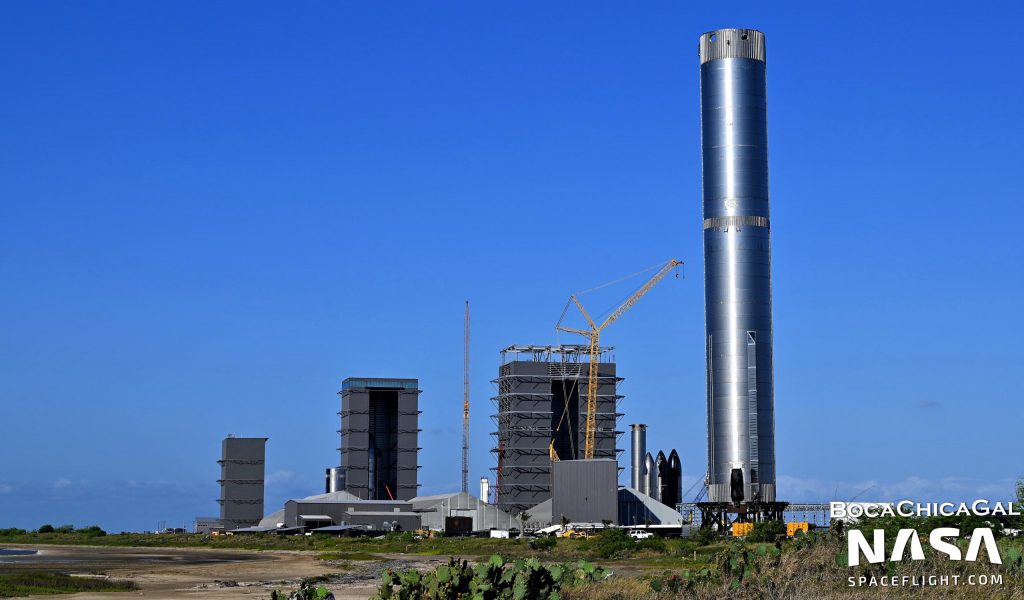

News
SpaceX valuation to grow by 27% as Starship, Starlink programs seek more funding
CNBC reports that SpaceX is seeking to raise at least $1.725 billion in its first funding round of 2022, potentially boosting the private company’s valuation as high as $127 billion.
The report signals just the latest in a long line of high-profile rounds of funding SpaceX has secured over the last seven years, gradually boosting its valuation by a factor of more than 100. More likely than not, this round will also be fully subscribed or even oversubscribed as investors scramble over a relatively rare opportunity to snag a small slice of SpaceX – a demand so high that Equidate once stated that SpaceX effectively had access to ‘an unlimited amount of funding’ in 2018.
Four years later, it’s clear that Equidate’s position and forecast were prescient. After a few slow years post-2015, SpaceX’s fundraising activity returned with a vengeance in 2019. From 2019 to 2021, the company privately raised more than $5.2 billion – nearly triple the amount of private funding SpaceX raised from 2002 to 2018. In the likely event that the latest in a long line of highly sought-after and oversubscribed SpaceX investment rounds, SpaceX will have ultimately raised between $8.6 and $9 billion since 2015, averaging about $1.3 billion per year over the last seven years.
More likely than not, a vast majority of that $9 billion has gone towards Starlink and Starship – both of which are also almost exclusively responsible for the fact that SpaceX’s valuation outmatches its annual revenue by a factor of several dozen. CEO Elon Musk has stated in 2017 and 2018 that SpaceX invested around $1 billion to develop Falcon booster reusability and more than $500 million to develop a triple-booster variant of Falcon 9 known as Falcon Heavy – still the most capable operational rocket in the world four years after its debut. It’s possible that some portion of SpaceX’s fundraising since 2015 has gone towards basic recurring expenses during years with few launches and relatively little revenue.
However, it’s likely that most or all of the remaining $7-7.5 billion – separate from several lucrative contracts awarded by the US military and NASA – has gone towards Starlink and Starship. In the last few years, SpaceX has effectively built a massive factory and launch pad for the largest rocket ever built (Starship) out of empty lots in South Texas. SpaceX has also turned several nondescript buildings near Seattle, Washington into the most productive satellite factory in spaceflight history and is working on additional factories to mass-produce hundreds of thousands to millions of cutting-edge satellite dishes per year to allow millions of people to connect to the internet through Starlink.


Assuming a rough marginal cost of $500,000 per satellite and $15 million per Falcon 9 launch, SpaceX could have easily spent more than $2 billion just to build and launch the ~2650 Starlink satellites it’s launched to date. Accounting for the annual salaries and overhead needed for the thousands of employees required to build those satellites and conduct more than 50 different Starlink launches, the true cost over several years could be closer to $3-5 billion. Meanwhile, Starbase has rapidly expanded, built vast new infrastructure, mass-produced around two-dozen different Starship tanks and prototypes, completed dozens of tests, built and tested 150-200 Raptor engines, and conducted nine major flight tests.
Up until late 2021, perhaps less than 5-10% of funding for the above activities came directly from US government contracts. While Starlink remains almost entirely privately funded, SpaceX’s Starship program received a major influx of funding and support from NASA through a $3 billion Moon landing contract awarded in April 2021, but protests from two competitors meant that funds from that contract only began reaching SpaceX around the end of the year. Ultimately, it’s not hard to see why SpaceX has needed to raise so much capital in the last three years.

News
Tesla dominates in the UK with Model Y and Model 3 leading the way

Tesla is dominating in the United Kingdom so far through 2025, and with about two weeks left in the year, the Model Y and Model 3 are leading the way.
The Model Y and Model 3 are the two best-selling electric vehicles in the United Kingdom, which is comprised of England, Scotland, Wales, and Northern Ireland, and it’s not particularly close.
According to data gathered by EU-EVs, the Model Y is sitting at 18,890 units for the year, while the Model 3 is slightly behind with 16,361 sales for the year so far.
The next best-selling EV is the Audi Q4 e-tron at 10,287 units, lagging significantly behind but ahead of other models like the BMW i4 and the Audi Q6 e-tron.
GOOD NEWS 🇬🇧 Tesla is absolutely crushing the UK electric vehicle market in 2025 💥
The numbers are in, and the dominance is clear. With an impressive amount of 42,270 vehicles delivered year-to-date, the brand now commands a solid 9.6% market share of the total auto market 🆒… pic.twitter.com/dkiGX9kzd0
— Ming (@tslaming) December 18, 2025
The Model Y has tasted significant success in the global market, but it has dominated in large markets like Europe and the United States.
For years, it’s been a car that has fit the bill of exactly what consumers need: a perfect combination of luxury, space, and sustainability.
Both vehicles are going to see decreases in sales compared to 2024; the Model Y was the best-selling car last year, but it sold 32,610 units in the UK. Meanwhile, the Model 3 had reached 17,272 units, which will keep it right on par with last year.
Tesla sold 50,090 units in the market last year, and it’s about 8,000 units shy of last year’s pace. It also had a stronger market share last year with 13.2 percent of the sales in the market. With two weeks left in 2025, Tesla has a 9.6 percent market share, leading Volkswagen with 8 percent.
The company likely felt some impact from CEO Elon Musk’s involvement with the Trump administration and, more specifically, his role with DOGE. However, it is worth mentioning that some months saw stronger consumer demand than others. For example, sales were up over 20 percent in February. A 14 percent increase followed this in June.
News
Tesla Insurance officially expands to new U.S. state
Tesla’s in-house Insurance program first launched back in late 2019, offering a new way to insure the vehicles that was potentially less expensive and could alleviate a lot of the issues people had with claims, as the company could assess and repair the damage itself.

Tesla Insurance has officially expanded to a new U.S. state, its thirteenth since its launch in 2019.
Tesla has confirmed that its in-house Insurance program has officially made its way to Florida, just two months after the company filed to update its Private Passenger Auto program in the state. It had tried to offer its insurance program to drivers in the state back in 2022, but its launch did not happen.
Instead, Tesla refiled the paperwork back in mid-October, which essentially was the move toward initiating the offering this month.
BREAKING: Tesla Insurance has just officially launched in Florida.
This is the first new state to receive @Tesla Insurance in more than 3 years. In total, Tesla insurance is now available in 13 U.S. states (map in thread below of all the states).
Tesla Insurance in Florida uses… pic.twitter.com/bDwh1IV6gD
— Sawyer Merritt (@SawyerMerritt) December 17, 2025
Tesla’s in-house Insurance program first launched back in late 2019, offering a new way to insure the vehicles that was potentially less expensive and could alleviate a lot of the issues people had with claims, as the company could assess and repair the damage itself.
It has expanded to new states since 2019, but Florida presents a particularly interesting challenge for Tesla, as the company’s entry into the state is particularly noteworthy given its unique insurance landscape, characterized by high premiums due to frequent natural disasters, dense traffic, and a no-fault system.
Annual average premiums for Florida drivers hover around $4,000 per year, well above the national average. Tesla’s insurance program could disrupt this, especially for EV enthusiasts. The state’s growing EV adoption, fueled by incentives and infrastructure development, aligns perfectly with Tesla’s ecosystem.
Moreover, there are more ways to have cars repaired, and features like comprehensive coverage for battery damage and roadside assistance tailored to EVs address those common painpoints that owners have.
However, there are some challenges that still remain. Florida’s susceptibility to hurricanes raises questions about how Tesla will handle claims during disasters.
Looking ahead, Tesla’s expansion of its insurance program signals the company’s ambition to continue vertically integrating its services, including coverage of its vehicles. Reducing dependency on third-party insurers only makes things simpler for the company’s automotive division, as well as for its customers.
News
Tesla Full Self-Driving gets sparkling review from South Korean politician
“Having already ridden in an unmanned robotaxi, the novelty wasn’t as strong for me, but it drives just as well as most people do. It already feels like a completed technology, which gives me a lot to think about.”

Tesla Full Self-Driving got its first sparkling review from South Korean politician Lee So-young, a member of the country’s National Assembly, earlier this week.
Lee is a member of the Strategy and Finance Committee in South Korea and is a proponent of sustainable technologies and their applications in both residential and commercial settings. For the first time, Lee was able to utilize Tesla’s Full Self-Driving technology as it launched in the country in late November.
Her thoughts on the suite were complimentary to the suite, stating that “it drives just as well as most people do,” and that “it already feels like a completed technology.”
드디어 오늘, 서울에서 테슬라 FSD 체험 했습니다.
JiDal Papa님의 모델S 협찬에 힘입어^^ 파파님 정말 감사합니다.
국회 -> 망원시장 -> 홍익대 -> 국회 복귀 코스였고요.
이미 무인 로보택시를 타봐서 그런지 신기함은
덜했지만, 웬만한 사람만큼 운전을 잘하네요.이미 완성된 기술이라고… pic.twitter.com/8pAidHBpRG
— 이소영 국회의원 (Soyoung Lee) (@im_soyounglee) December 17, 2025
Her translated post says:
“Finally, today I got to experience Tesla FSD in Seoul. Thanks to the Model S sponsored by JiDal Papa^^, I’m truly grateful to Papa. The route was from the National Assembly -> Mangwon Market -> Hongik University -> back to the National Assembly. Having already ridden in an unmanned robotaxi, the novelty wasn’t as strong for me, but it drives just as well as most people do. It already feels like a completed technology, which gives me a lot to think about. Once it actually spreads into widespread use, I feel like our daily lives are going to change a lot. Even I, with my license gathering dust in a drawer, don’t see much reason to learn to drive a manual anymore.”
Tesla Full Self-Driving officially landed in South Korea in late November, with the initial launch being one of Tesla’s most recent, v14.1.4.
It marked the seventh country in which Tesla was able to enable the driver assistance suite, following the United States, Puerto Rico, Canada, China, Mexico, Australia, and New Zealand.
It is important to see politicians and figures in power try new technologies, especially ones that are widely popular in other regions of the world and could potentially revolutionize how people travel globally.








